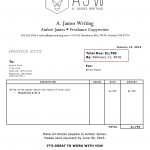The “content is king” debate (as I understand it) pits those who believe quality content should rule against those who believe any content is good as long as it brings in advertising bucks. The debate played out like a battle between the dark and light sides of the Force from the Star Wars saga. It’s appropriate that the deluge of articles about the latest Star Wars film, The Force Awakens, demonstrates this content conflict.
It’s a Star Wars heavy week, with the release of The Force Awakens on home media and the teaser trailer for Rogue One. I think it’s okay to talk about The Force Awakens’ plot points, but if you’ve been waiting to see the film from the comfort of your couch, assume major spoilers below.
If you’re a Star Wars fan like me, you were probably awaiting the seventh installment in the series with a mix of excitement and trepidation. After its release, the film, unsurprisingly, became a phenomenon in a short amount of time (I loved the film, but the reasons why are a topic for another venue). As I noted above, lots of articles speculated on a host of plot points came out at the same time.
Fans really wanted to discuss the parentage of the film’s protagonist, Rey (Daisy Ridley). The Force Awakens leaves the identity of Rey’s parents ambiguous. That didn’t stop movie news sites like Cinema Blend, Pop Sugar, Movie Pilot, Collider, The Mary Sue, and more, from running stories on every theory (valid and crackpot) from Reddit or YouTube. One video theorized that Rey is Anakin Skywalker reincarnated.
There were rays of hope, such as thoughtful long-form articles like Tor.com’s “Hey, Star Wars: Episode VIII—Don’t Make Rey a Skywalker.” (Which I disagree with, by the way, but that’s the beauty of thoughtful long-form content. It engages you.)
It doesn’t take an experienced marketer to know that so many people were hungry to know more, more, more. By the end of the first week, though, I was put off by the clickbait headlines. There were articles with titles like, “This Theory About Rey Confirmed!” but the content was just some kid’s opinion that went viral. Running anything with the words, “Rey,” “Skywalker,” or “Snoke” put eyeballs on sites, generating “forceful” streams of revenue (sorry).
The articles that pretended to be long-form and descriptive articles were just empty calories. As long as people kept searching for news or discussion points, the websites kept churning out content. Did I just describe your company’s content marketing strategy? Dark side adherents like Kylo Ren would applaud such brute force actions, but I think following Maz Kanata’s advice about letting the Force flow through you (which gives Rey the strength to actually defeat the overconfident Ren) is a better strategy.
Here’s some basic content strategy tips to think about … cribbed from the entire Star Wars saga:
Be mindful
Do you have research on your customers? Be like a Jedi Master and center yourself with market research. This is the foundation for your content strategy and should remain your touchstone as you create campaigns.
Use your instincts
What’s the best way to reach your audience? Webinars, infographics, your blog, or social media? A mix? Channel the resourceful Rey as she assembled the perfect tools that allowed her to find hidden treasures on Jakku.
Track and follow up
It goes without saying that you should check your analytics and see what gets the most response. Be a tenacious bounty hunter like Boba Fett and isolate your top content performers. So-called vanity metrics are only useless if you ignore what catches your audience’s attention, and if you keep hammering the clickbait. Your audience wants substance. If your content converts, of course, then you know you have secured your prize. It’s up to you to enshrine it in carbonite.
Be nimble
Don’t be afraid to augment certain aspects of your strategy and ditch other areas that aren’t working. Yoda danced all over Count Dooku’s face when the latter tried to engage him in a “Force contest” in Attack of the Clones. Do the same with your non-starters.
The executives believe that releasing a Star Wars film each year will keep the fan base happy and engaged; will they score a win each time? Probably not. But they understand the most important aspect of a content strategy: their fans discuss, debate, and serve as unpaid brand ambassadors. And that’s why the Force is with them.




